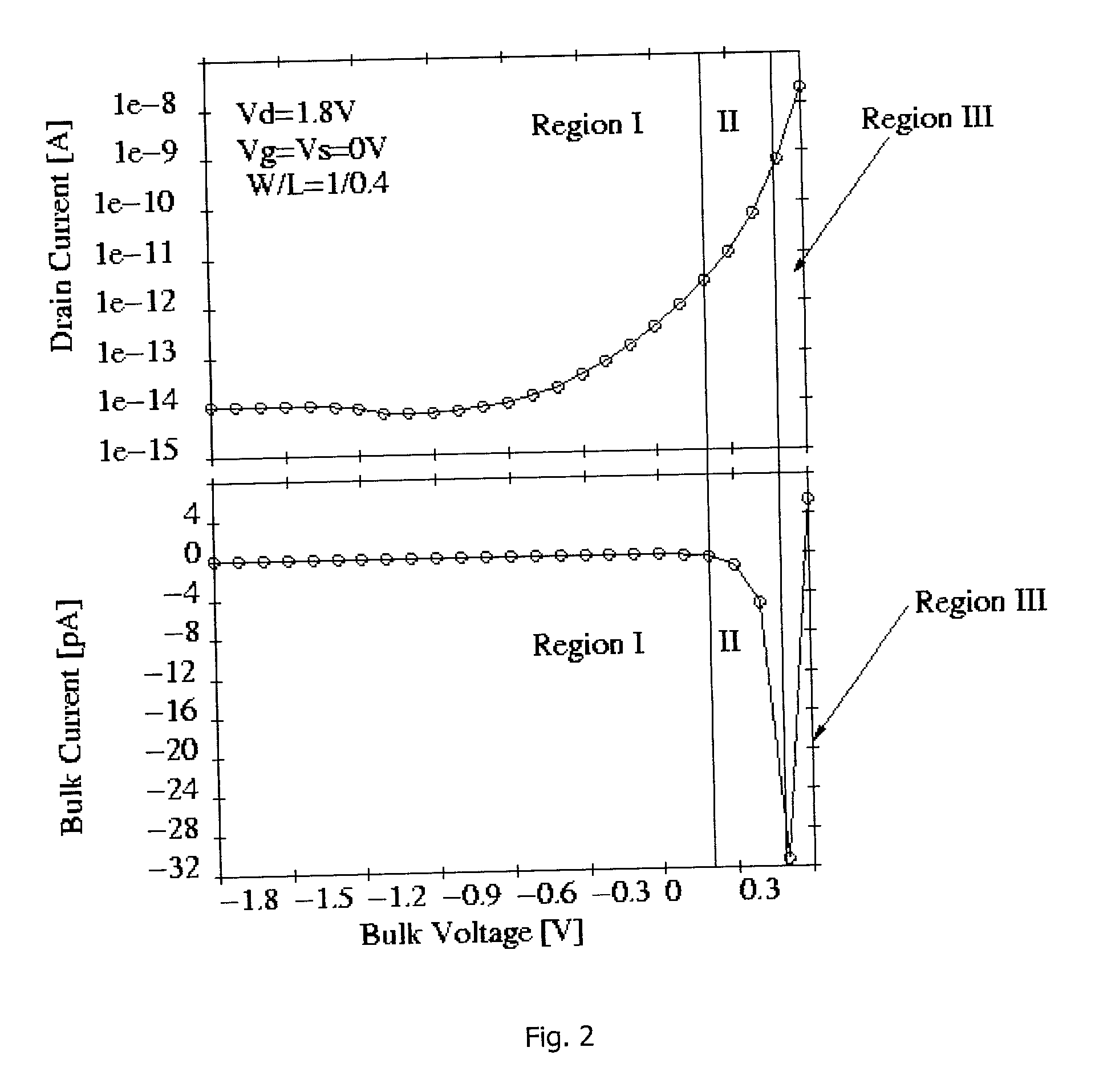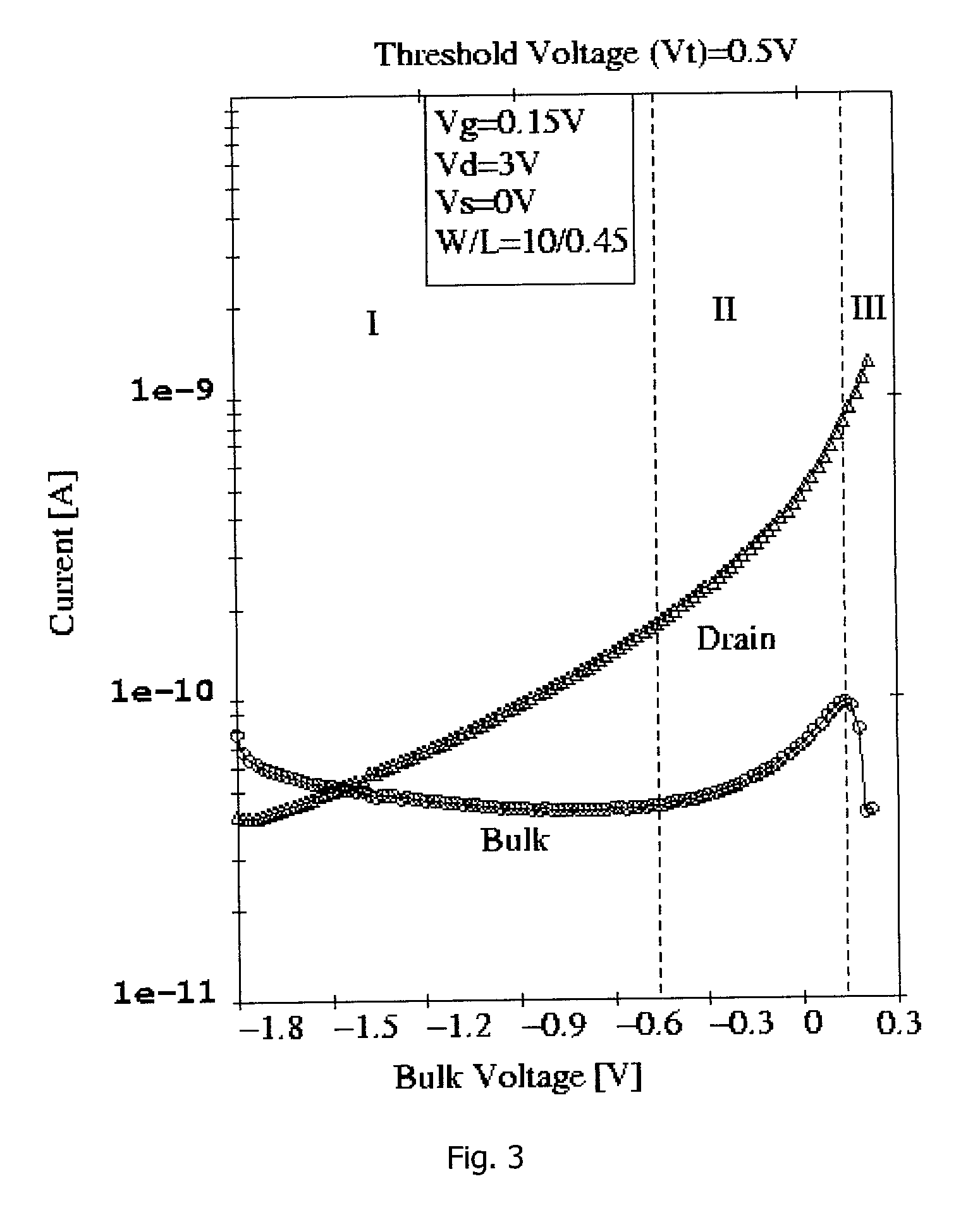Negative resistance device
a negative resistance and memory technology, applied in semiconductor devices, digital storage, instruments, etc., can solve the problems of dram memory not matching the speed of the central processor unit (cpu), dram is the least expensive semiconductor memory available, and inconvenient storage and storag
- Summary
- Abstract
- Description
- Claims
- Application Information
AI Technical Summary
Problems solved by technology
Method used
Image
Examples
Embodiment Construction
[0039] Referring to FIGS. 1(a) and 1(b), a negative resistance device (NRD), of the invention comprises a MOSFET structure 1 and a bias means, not shown. In this embodiment, the device has a p-type bulk region, however, it may alternatively have an n-type bulk region with appropriate changes to the polarity of the dopants in the structure and the applied biases. Of course, for an n-type bulk region the word "positive" should be replaced with the word "negative" in the following description.
[0040] The NRD physical structure is similar to that of a MOSFET. It comprises a bulk 2 of p-type material and source (S) and drain (D) regions of n-type material fully or partially contained in the bulk. A gate region G of n type polysilicon is insulated from the bulk by a dielectric material 3 of silicon dioxide material. The gate region G extends over the source S and the bulk 2 which includes the junction between the bulk and the source regions. The structure 1 also comprises a bulk terminal 4...
PUM
 Login to View More
Login to View More Abstract
Description
Claims
Application Information
 Login to View More
Login to View More - R&D
- Intellectual Property
- Life Sciences
- Materials
- Tech Scout
- Unparalleled Data Quality
- Higher Quality Content
- 60% Fewer Hallucinations
Browse by: Latest US Patents, China's latest patents, Technical Efficacy Thesaurus, Application Domain, Technology Topic, Popular Technical Reports.
© 2025 PatSnap. All rights reserved.Legal|Privacy policy|Modern Slavery Act Transparency Statement|Sitemap|About US| Contact US: help@patsnap.com



